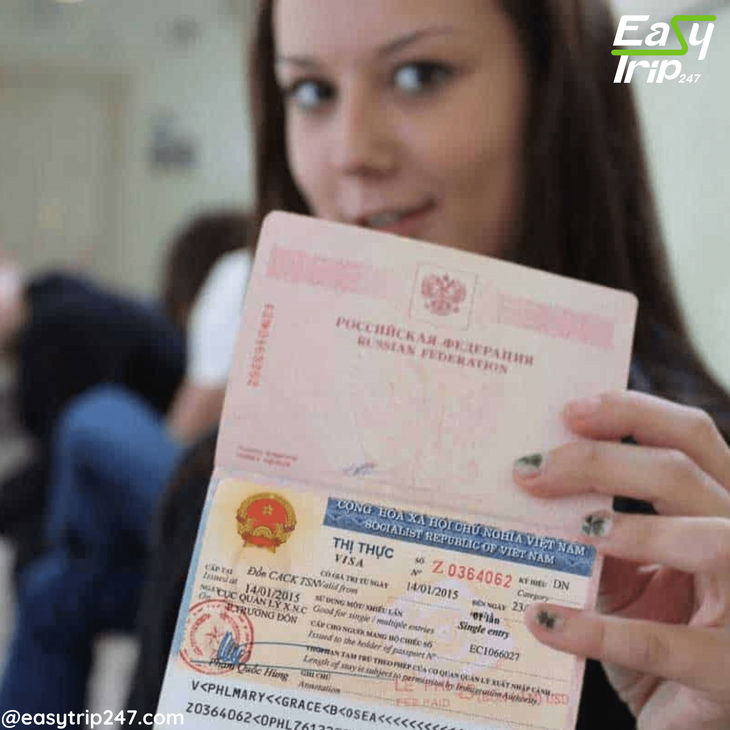Do I Need a Visa to Enter Vietnam? A Travel Guide With Tips on the Ideal Time to Visit Vietnam
On
23/06/2025Reading time:
1 min
Summary:
Planning a trip to Vietnam is a thrilling prospect. Whether you're dreaming of wandering ancient alleyways in Hanoi, cruising through emerald waters in Ha Long Bay, or trekking in the misty mountains of Sapa, Vietnam offers travelers an extraordinary blend of culture, history, nature, and cuisine.

Understanding Vietnam’s Visa Policy
Vietnam’s visa policy is flexible but varies significantly depending on your passport. As of now, citizens of several countries—including most ASEAN members, some European nations, Japan, South Korea, and Russia—can enter Vietnam visa-free for short stays ranging from 14 to 45 days. For example, travelers from the UK, Germany, and France can enjoy up to 45 days visa-free. However, for longer stays or if you're from a country not on the exemption list, you’ll need a visa.
Luckily, obtaining a visa for Vietnam has become easier than ever thanks to the e-visa system, which covers over 80 countries. The e-visa allows travelers to enter Vietnam for tourism or business purposes for up to 90 days with single or multiple entries. This is great news for people planning a long vacation during the ideal time to visit Vietnam—you can experience the country at its seasonal best without the worry of renewing your visa midway.
Aligning Your Visa Duration With the Ideal Time to Visit Vietnam
If you're considering a lengthy adventure across Vietnam’s many regions, understanding both the visa process and the ideal time to visit Vietnam is key to a seamless trip. Weather varies greatly across the country due to its length, and each region shines during different times of the year. So why not align your visa period with Vietnam’s most rewarding seasons?
From November to April, Vietnam’s dry season offers the most comfortable travel conditions. Northern Vietnam is cool and crisp, perfect for trekking in Sapa or exploring the cultural richness of Hanoi. Central Vietnam, including Hoi An and Hue, begins to dry out from February, offering idyllic beach weather. Meanwhile, southern regions like Ho Chi Minh City and the Mekong Delta boast warm temperatures and sunshine throughout.
If your visa allows a 30- to 90-day stay, this window can be the ideal time to visit Vietnam and cover the country from north to south. You’ll avoid the monsoon rains, navigate comfortably, and enjoy the full breadth of the country’s stunning topography and traditions.
Planning Multi-City Travel? Consider Entry Points for E-Visas
When applying for a Vietnamese e-visa, you must choose your intended entry and exit points. Vietnam has 13 international airports and dozens of land borders that accept e-visa entries. This flexibility is especially helpful if you're crafting an itinerary around the ideal time to visit Vietnam, allowing you to enter through Hanoi and exit from Ho Chi Minh City or vice versa, depending on the season.
For example, if you plan to start your journey in the north during autumn (October to November), which is often described as the ideal time to visit Vietnam for seeing golden rice terraces in Sapa or enjoying Hanoi’s cool breeze, you can enter through Noi Bai International Airport in Hanoi. As you travel southward, you can end your trip in Ho Chi Minh City when the region is bathed in tropical sunlight.
Why Timing Matters: Combining Visa Duration with Seasonal Advantages
Your visa decision should go hand-in-hand with when you decide to travel. While Vietnam welcomes visitors year-round, the ideal time to visit Vietnam is when the weather is most favorable, the landscapes are at their peak, and cultural festivals are in full swing.
Spring (February to April) is excellent for flower festivals, beach holidays, and cultural exploration.
Autumn (September to November) offers vivid landscapes, harvest festivals, and cooler temperatures.
Winter in the north (December to February) is cold but dry, great for those who prefer crisp weather.
By securing the right visa ahead of time, you ensure you're legally prepared to enjoy the ideal time to visit Vietnam without the stress of cutting your journey short.
Visa Extensions and Long-Term Stays
If you discover that Vietnam's charms are too rich to absorb in one go, and you’ve entered on a shorter visa, there are options to extend your stay. However, visa extensions are not guaranteed and can be costly or complicated depending on the visa type. That’s why if your travel dates align with the ideal time to visit Vietnam, it’s better to apply for the maximum allowable duration right from the start—typically the 90-day e-visa.
This is especially beneficial for digital nomads, slow travelers, or retirees looking to spend an entire season exploring Vietnam at a leisurely pace. Experiencing the country during its most vibrant months while having your visa fully sorted means you can travel with ease and flexibility.
Visa on Arrival vs. E-Visa: Which Is Better?
Vietnam used to offer a popular Visa on Arrival (VOA) system, especially for tourists arriving by air. However, today, the e-visa system is more commonly recommended as it simplifies the process: no standing in line at the airport and no need for a pre-approval letter. It’s faster, more affordable, and aligns well with trip planning based around the ideal time to visit Vietnam.
Keep in mind, though, that if you're entering by land or sea, VOA is not an option, and e-visa is required. Therefore, if you plan to cross into Vietnam from Cambodia or Laos while chasing the best travel conditions, securing an e-visa ahead of time is the safest and most convenient choice.
Final Thoughts: Travel Smart and at the Right Time
So, do you need a visa to enter Vietnam? The answer is mostly yes, unless you're from one of the visa-exempt countries and staying for a short period. But with Vietnam’s e-visa system and reasonable processing time, applying for a visa has never been easier.
Just as important as your visa, however, is deciding when to go. Aligning your visit with the ideal time to visit Vietnam not only elevates your experience but also maximizes the value of your visa. From perfect weather to cultural richness and stunning natural beauty, Vietnam comes alive in the right season.
Planning a trip to Vietnam means considering practical aspects like visas, but it also means crafting an experience that leaves you in awe. By understanding both the bureaucratic process and the seasonal nuances, you’ll ensure your trip to Vietnam is not only legal but unforgettable—especially when you choose the ideal time to visit Vietnam.
Design Your Tour Today And Get A Quote. Contact Us Here: +84.975.504.825
Source: Easytrip247 Team compiled.
